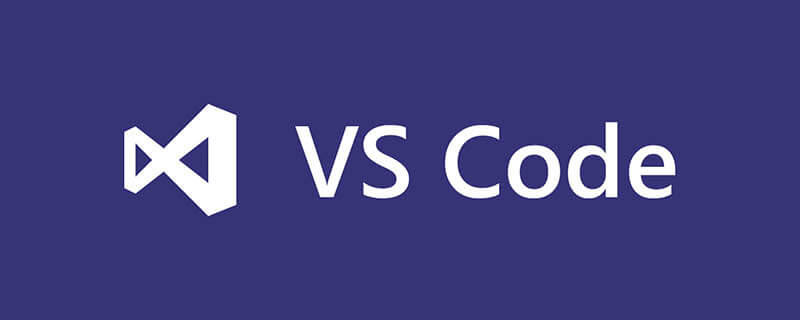Principles of local variable naming in C language: see the name and know the meaning, and clearly express the use and meaning of variables. Use meaningful English words or abbreviations to avoid blur and confusion. Follow the camel or underline nomenclature to keep the style consistent. Avoid single letter variable names unless they are loop counters or temporary variables. Keep naming consistent and do not change it at will. Never use system keywords or reserved words as variable names.

To put it bluntly, the naming of local variables in C language is how to name the little guys inside your function. This seems simple, but it has hidden mystery, which is related to the readability, maintainability, and even performance of the code (although it doesn't have much impact, we are pursuing the ultimate).
Many people think that you can just name it, but the compiler can recognize it anyway. This idea is too naive! Imagine that you are facing a function with thousands of lines of code, with variable names all a , b , c , or var1 , var2 , var3 , and it feels like reading a book of heaven. Debugging is even more of a nightmare.
Therefore, good local variable naming is a compulsory course for programmers. It should clearly express the purpose and meaning of the variable.
Core principle: See the name and know the meaning
This is not just empty talk. A good variable name should let you understand what it is and what it is for at a glance. For example, in the function of calculating the area of a circle, the radius can be used as radius , and the area can be used as area , instead of r and a . Even if you think r and a were very concise at that time, you might forget what they mean by looking at it in a few days.
Some suggestions are not dead rules, but flexible use is the best way:
- Use meaningful English words or abbreviations:
userNameis better thanun,itemCountis better thanic. Make sure that the abbreviation is easy to understand in the context of your code, and don't abbreviate it for the sake of abbreviation and make things worse. - Follow the camel nomenclature or underscore nomenclature: camelCase is like
userName, and underscore nomenclature (snake_case) is likeuser_name. Choose a style, and stick to it, and don't mix it in a project. I personally prefer hump, which is pleasing to the eye. - Avoid using single-letter variable names unless they are loop counters or temporary variables:
i,j,kare common in loops, and everyone can understand it. But try to avoid other places. - Keep naming consistency: If you use
userName, don't useuser_namefor a while,usernamefor a while. Keep consistency and make the code look tidy. - Do not use system keywords or reserved words as variable names: this can cause compilation errors, which is common sense.
Code example:
A function that calculates the average value, compares good naming and bad naming:
<code class="c">// Bad naming float avg(float a, float b, float c) { float sum = abc; float av = sum / 3; return av; } // Good naming float calculateAverage(float num1, float num2, float num3) { float sumOfNumbers = num1 num2 num3; float average = sumOfNumbers / 3.0f; // 注意这里加了.0f 保证精度return average; }</code>
Have you seen the difference? In the second version, the readability of the code is significantly improved.
Experience in trapping:
Once in a project, the variable naming was not standardized, making it very difficult to maintain later. I spent a lot of time clarifying the meaning of variables and modifying bugs. The lesson is profound! Therefore, it is definitely worth the investment to develop good naming habits from the beginning.
Summarize:
The naming of local variables in C language seems like a small matter, but it actually has a big relationship. Follow the above suggestions and develop good naming habits. Your code will be clearer and easier to maintain, and you will also avoid many detours. Remember, the code is written for people to see, and the second is executed for machines.
The above is the detailed content of What are the naming rules for local variables in C language?. For more information, please follow other related articles on the PHP Chinese website!
 (超详细)VScode中配置C语言环境的方法Dec 05, 2022 pm 07:05 PM
(超详细)VScode中配置C语言环境的方法Dec 05, 2022 pm 07:05 PMVScode中怎么配置C语言环境?下面本篇文章给大家介绍一下VScode配置C语言环境的方法(超详细),希望对大家有所帮助!
 c语言中node是什么意思Jul 06, 2022 pm 03:51 PM
c语言中node是什么意思Jul 06, 2022 pm 03:51 PM在C语言中,node是用于定义链表结点的名称,通常在数据结构中用作结点的类型名,语法为“struct Node{...};”;结构和类在定义出名称以后,直接用该名称就可以定义对象,C语言中还存在“Node * a”和“Node* &a”。
 c语言怎么将数字转换成字符串Jan 04, 2023 pm 03:20 PM
c语言怎么将数字转换成字符串Jan 04, 2023 pm 03:20 PMc语言将数字转换成字符串的方法:1、ascii码操作,在原数字的基础上加“0x30”,语法“数字+0x30”,会存储数字对应的字符ascii码;2、使用itoa(),可以把整型数转换成字符串,语法“itoa(number1,string,数字);”;3、使用sprintf(),可以能够根据指定的需求,格式化内容,存储至指针指向的字符串。
 c语言开根号运算符是什么Mar 06, 2023 pm 02:39 PM
c语言开根号运算符是什么Mar 06, 2023 pm 02:39 PM在c语言中,没有开根号运算符,开根号使用的是内置函数“sqrt()”,使用语法“sqrt(数值x)”;例如“sqrt(4)”,就是对4进行平方根运算,结果为2。sqrt()是c语言内置的开根号运算函数,其运算结果是函数变量的算术平方根;该函数既不能运算负数值,也不能输出虚数结果。
 c语言数组如何初始化Jan 04, 2023 pm 03:36 PM
c语言数组如何初始化Jan 04, 2023 pm 03:36 PMC语言数组初始化的三种方式:1、在定义时直接赋值,语法“数据类型 arrayName[index] = {值};”;2、利用for循环初始化,语法“for (int i=0;i<3;i++) {arr[i] = i;}”;3、使用memset()函数初始化,语法“memset(arr, 0, sizeof(int) * 3)”。
 c语言合法标识符的要求是什么Aug 27, 2020 pm 01:47 PM
c语言合法标识符的要求是什么Aug 27, 2020 pm 01:47 PMc语言合法标识符的要求是:1、标识符只能由字母(A~Z, a~z)、数字(0~9)和下划线(_)组成;2、第一个字符必须是字母或下划线,不能是数字;3、标识符中的大小写字母是有区别的,代表不同含义;4、标识符不能是关键字。
 c语言中源文件编译后生成什么文件Nov 23, 2022 pm 07:44 PM
c语言中源文件编译后生成什么文件Nov 23, 2022 pm 07:44 PMc语言编译后生成“.OBJ”的二进制文件(目标文件)。在C语言中,源程序(.c文件)经过编译程序编译之后,会生成一个后缀为“.OBJ”的二进制文件(称为目标文件);最后还要由称为“连接程序”(Link)的软件,把此“.OBJ”文件与c语言提供的各种库函数连接在一起,生成一个后缀“.EXE”的可执行文件。
 c语言怎么计算n的阶乘Jan 04, 2023 pm 03:18 PM
c语言怎么计算n的阶乘Jan 04, 2023 pm 03:18 PMc语言计算n的阶乘的方法:1、通过for循环计算阶乘,代码如“for (i = 1; i <= n; i++){fact *= i;}”;2、通过while循环计算阶乘,代码如“while (i <= n){fact *= i;i++;}”;3、通过递归方式计算阶乘,代码如“ int Fact(int n){int res = n;if (n > 1)res...”。


Hot AI Tools

Undresser.AI Undress
AI-powered app for creating realistic nude photos

AI Clothes Remover
Online AI tool for removing clothes from photos.

Undress AI Tool
Undress images for free

Clothoff.io
AI clothes remover

AI Hentai Generator
Generate AI Hentai for free.

Hot Article

Hot Tools

EditPlus Chinese cracked version
Small size, syntax highlighting, does not support code prompt function

Safe Exam Browser
Safe Exam Browser is a secure browser environment for taking online exams securely. This software turns any computer into a secure workstation. It controls access to any utility and prevents students from using unauthorized resources.

Dreamweaver CS6
Visual web development tools

SublimeText3 Linux new version
SublimeText3 Linux latest version

mPDF
mPDF is a PHP library that can generate PDF files from UTF-8 encoded HTML. The original author, Ian Back, wrote mPDF to output PDF files "on the fly" from his website and handle different languages. It is slower than original scripts like HTML2FPDF and produces larger files when using Unicode fonts, but supports CSS styles etc. and has a lot of enhancements. Supports almost all languages, including RTL (Arabic and Hebrew) and CJK (Chinese, Japanese and Korean). Supports nested block-level elements (such as P, DIV),






